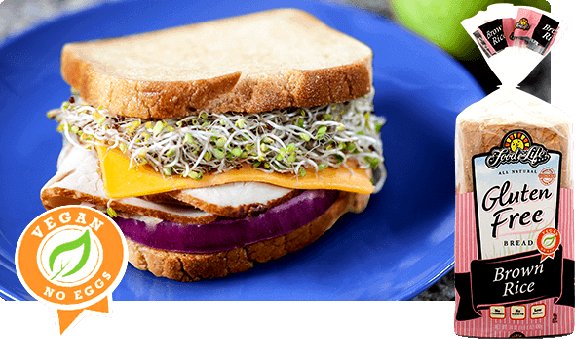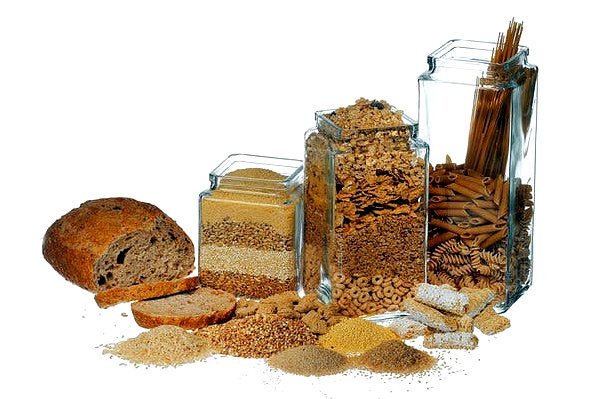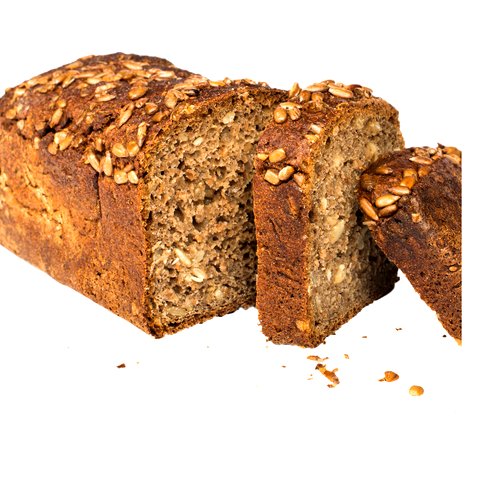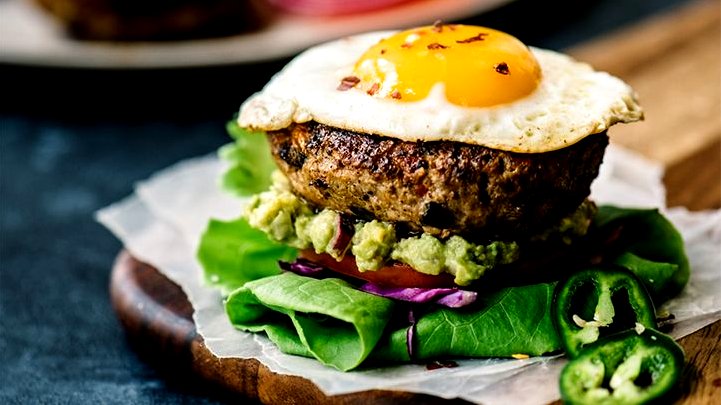Bread: the cornerstone of most diets! Bread has become such a part of our lives that its absence creates an inexplicable hole in our stomachs. But have you ever considered what happens if someone were to reduce or completely forgo bread from their daily intake? Abstaining can bring many advantages such as weight loss and blood sugar regulation as well as improved gut health; but doing so also brings certain downsides which must be carefully considered prior to embarking on such an adventure.
At its heart, this opus seeks to provide answers to key questions surrounding bread-free living, offering comprehensive insights that illuminate its implications. Browse our compilation as we present guidelines and tips that will assist in your pursuit of living without bread - from gluten-free diets with numerous health advantages, carb cycling routines, and providing nutritious alternatives as replacements - we equip you with every tool necessary for successful bread-free living! Let us explore this labyrinthine collection of knowledge together as we uncover its essence!
I. The Benefits of Going Bread-Free
As one considers eliminating bread from their diet, a question commonly raised is "what are the advantages of going bread-free?" Now let us delve deeper into this intricate subject matter and enumerate all of the advantages that accompany this journey towards breadlessness.
Weight Loss
Reducing bread consumption can play an incredible role in weight loss. Bread made from refined grains contains an excess of calories and carbohydrates that can wreak havoc on one's waistline; cutting bread out can lead to significant decrease in daily caloric consumption, leading to weight loss over time.
Blood Sugar Control
Going bread-free is also an impressive way of managing blood sugar levels, particularly beneficial to those living with diabetes. Bread contains sugar that, combined with refined carbs, can cause your blood sugar to spike unexpectedly; by eliminating bread from your diet you avoid these dangerous spikes and maintain more stable and healthful levels.
Gut Health
Going bread-free can provide multiple health benefits - weight loss and blood sugar level control among them - but also restore balance to your gut flora. Bread is made primarily with wheat flour which contains gluten, which has long been associated with inflammation in the gut and debilitating ailments such as bloating, diarrhea and persistent gaseousness. Eliminating bread from your diet will effectively mitigate inflammation while stimulating intestinal reconstruction; eventually providing stability and balance to your gut microbiome.
Culinary Adventures
Staying off bread presents an endless supply of culinary adventures, free from its chains. Foodies who try their luck at going sans bread might discover new healthy and flavorful alternatives that hadn't crossed their radar before!
Reducing bread from your diet can open the doors to many healthful benefits, including weight loss, blood sugar regulation, and gut health improvements. Any significant dietary adjustments require consulting a healthcare provider or dietician in order to maintain optimal health while reaching dietary goals.
II. The Benefits of Going Bread-Free
As you consider removing bread from your diet, it is essential to carefully consider all possible repercussions that might follow this decision. While going without bread has many advantages, there can also be potential downsides which should be carefully evaluated before making this change. In this section we will investigate these drawbacks so you can make an informed decision.
Withdrawal Symptoms
One of the major drawbacks to going without bread is experiencing withdrawal symptoms. You likely already know this, as bread contains gluten -- a protein which releases dopamine into the brain, creating a rush similar to what one experiences after taking opioid drugs. When bread is removed from your diet, your body may crave these pleasurable sensations and cause headaches, fatigue, irritability or mood swings; though these usually dissipate over time.
Nutritional Deficiencies
Eliminating bread from your diet could result in the loss of some essential nutrients. Bread is widely recognized as an excellent source of carbohydrates, fiber, vitamins, and minerals - particularly whole-grain or sprouted varieties - so if you decide to go bread-free you must seek alternative sources such as fruits, vegetables, legumes, nuts, and seeds for those essential dietary elements; otherwise nutrient deficiency could arise and negatively impact overall health and well-being.
Carbohydrate Restriction
Keep the potential risks associated with carb restriction in mind when going bread-free. Carbs provide energy for vital functions throughout your body, such as metabolism. Without sufficient carbohydrates in your diet, fatigue, weakness and health complications may arise over time.
Meal Preparation Time and Effort
Notably, some individuals find bread an easy and convenient food option, making its absence an effortful task that may prove time consuming and challenging.
While going bread-free can be beneficial in numerous ways, there are potential downsides that you should keep in mind before making this decision. Withdrawal symptoms, nutritional deficiencies, carbohydrate restriction and meal preparation time/effort could all become barriers when giving up bread. Therefore, it's crucial that before committing to this lifestyle change it is weighed against its benefits carefully and seek advice from your doctor or dietician regarding meeting nutrient requirements and exploring alternative food sources as you navigate this new chapter in your life.
Learn more at forward.com about the benefits of going bread-free.III. The Negative Effects of Going Bread-Free
As we venture further into bread-free lifestyles, it's essential that we explore alternative options that will meet our nutritional requirements and preferences. Don't miss section three as we uncover inventive and surprising strategies for maintaining a satisfying and healthy diet without bread!
Gluten-Free Bread
Gluten-free bread has quickly become one of the most sought-after offerings. Made with alternative flours such as rice, almond, coconut, or quinoa flours - not wheat! - it provides those who cannot consume wheat flour an opportunity to still experience bready goodness in their stomachs. When looking for gluten-free options, be sure to select ones rich in fiber and protein content as these will offer additional micronutrient benefits!
Carb Cycling
Are you tired of following rigid diet plans? Try carb cycling instead - an approach which involves shifting between high and low-carb days as well as periods without bread, to still provide satisfying satisfaction while cutting calorie consumption for maximum health benefits.
Alternative Wrapping Options
Let's roll with alternative wrapping options like lettuce or collard wraps as wrapping alternatives! Instead of traditional bread, tuck into leafy greens that can hold all your favorite sauces and fillings. Add an exciting element to mealtime with one or more leafy green rolls or wraps!
Anti-Inflammatory Foods
Do you want to reduce inflammation in your body and gut? Anti-inflammatory foods like turmeric, ginger, garlic, leafy greens, and berries may provide essential nutrients, antioxidants, and anti-inflammatory properties that will do just that. Incorporating them into meals not only makes them tasty but will also boost their nutritional benefits!
Nutrient-Dense, Low-Carb, and High-Fiber Options
Finally, our selection of nutrient-dense, low-carb, and high-fiber food options, including fruits, vegetables, legumes, nuts, seeds, and lean protein sources, offers something deliciously nutritious to satisfy both belly and body! So enjoy an array of colorful plates filled with nutritious treats designed to satiate and heal.
There are plenty of satisfying alternatives to bread that will meet both your nutritional and flavorful needs. From gluten-free bread and veggie wraps to anti-inflammatory foods and nutrient-dense options, these alternatives will allow you to reach your nutrition goals while satisfying both taste buds and nutritionists alike.
IV. Alternative Options for Going Bread-Free
Section Four: Unique Approaches for Effectively Avoiding Bread
As one transitions away from bread, they may experience difficulty. But with some guidance from experienced professionals, the process can become less daunting. Here are a few helpful suggestions designed to make the transition less daunting:
-
Explore Alternative Flours
Experiment with alternative flours with bread-like textures - almond, chickpea, coconut flours or cloud bread may provide great low-carb and gluten-free solutions.
-
Add Whole-Grain or Sprouted Bread
While still monitoring your carb intake, try adding in whole-grain or sprouted bread as a source of essential vitamins and minerals.
-
Increase Fiber Intake
Benefit from the abundance of fiber-rich fruits, veggies, legumes, nuts, and seeds to boost fiber, vitamins, and minerals intake.
-
Try Alternatives to Bread
Spice up your meals by trying something other than bread for meals like lettuce or collard wraps - in some instances even completely forgoing bread altogether!
-
Seek Professional Advice
Engage the expertise of a registered dietician or healthcare expert in order to develop an optimal diet plan.

By applying these specific strategies, you'll naturally and successfully bid farewell to bread and so safeguard both your health and enjoyment in an effective yet secure manner.
Simply stated, eliminating bread from your diet could bring many significant advantages, including weight loss, better blood sugar regulation, enhanced gut health and providing alternative food sources. However, the process can also produce potential drawbacks such as withdrawal symptoms, insufficient food supplies and feelings of being overpowered or disturbed. To successfully navigate this transition period requires both positive reinforcement and professional counsel. Exploring gluten-free bread varieties, engaging in carb cycling or other low-carb strategies, expanding your fiber intake, and creating delicious dishes are invaluable ways of staying on track with your health goals without compromising flavor or satisfaction.
Conclusion
No matter your taste or diet preference, bread can be an unnerving and complex food item to tackle head on. While its presence has unquestionable value in daily diets - from weight loss to improved health biomarkers like blood sugar levels - its elimination may bring with it unwelcome side effects like withdrawal symptoms, depletion of important nutrients and the removal of vital dietary conveniences.
Don't let these potential downsides of bread stop you, dear reader! There are delicious alternatives that will bring unique gustatory experiences while fulfilling all of your nutritional needs. Test out different combinations with wraps, cloud bread and gluten-free alternatives from around the world and combine them with vibrant fruits, crisp vegetables, hearty legumes and protein-packed nuts - and experience its rewarding advantages while still having complete satiety and satisfaction!
Simply put, take a leap of faith towards improving your diet's wellbeing. Unlock the mystery that is bread's influence on your physical state, and dare to explore more fulfilling and healthier alternatives - thus opening up opportunities that were previously limited by our carb-based bread addictions.




